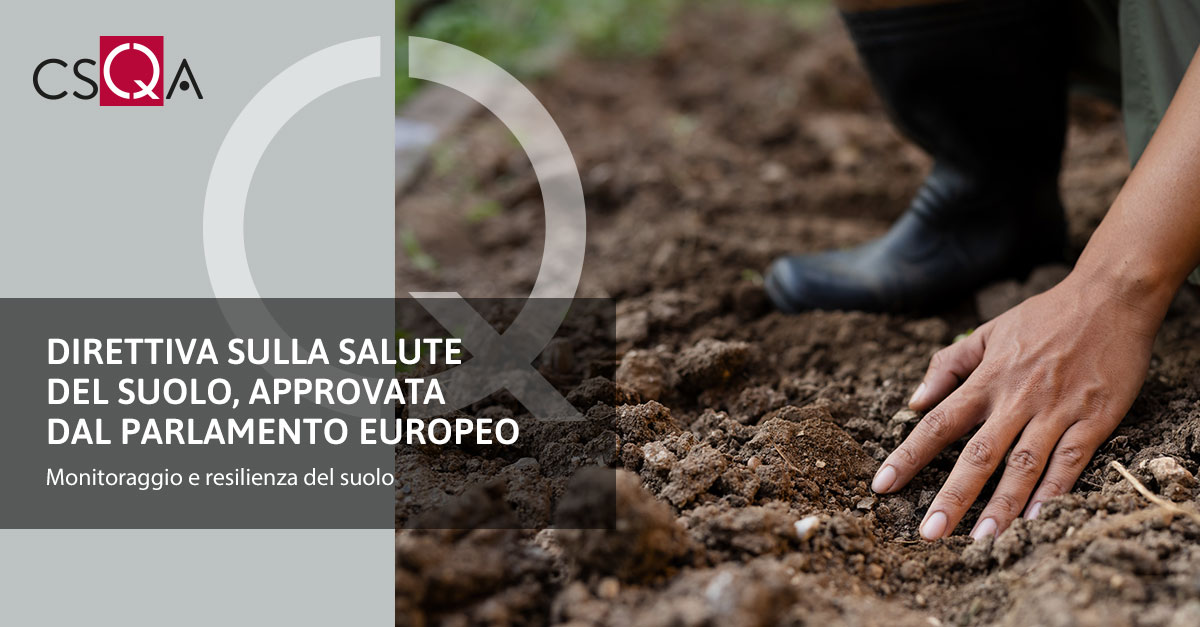 The Soil Health Directive , after being passed by the EU Council, was approved by the European Parliament.
The Soil Health Directive , after being passed by the EU Council, was approved by the European Parliament.The Directive requires Member States to establish a robust soil health monitoring system , based on the assessment of specific physical, chemical and biological descriptors , to achieve healthy soils by 2050.
This is a crucial challenge for the Italian primary sector , which must address land consumption affecting 72% of agricultural areas , integrating sustainable management practices with the financial instruments of the CAP.
From its publication in the Official Journal, Member States will have three years to implement it into their legal systems.
The importance of the land
Soil health is now a cornerstone of European food security, with 95% of food produced directly from the soil.The Directive commits Member States, including Italy, to achieving the ambitious goal of "healthy soils by 2050." This requires livestock breeders and farmers to step up efforts to protect soil fertility and reduce erosion , countering human pressure on grasslands and arable land, key areas for livestock farming.
Furthermore, the European regulatory text emphasizes the importance of monitoring soil biodiversity loss, using specific descriptors for fungi and bacteria.
A resource under siege: the Italian situation
Coinciding with the approval of the text in the European Parliament, the SNPA (National System for Environmental Protection) report "Land Consumption, Territorial Dynamics and Ecosystem Services" was released, with monitoring up to 2024 confirming the criticality of land consumption, which has accelerated sharply compared to the previous year.The country has been losing soil at a rate of 2.7 square meters every second (22.9 hectares per day).
Land consumption covered over 83.7 square kilometers in just one year (2023-2024), an increase of 15.6% compared to 2023.
Net land consumption (excluding restoration) amounted to 78.5 km², the highest value in the last 12 years. Artificial land cover occupies over 21,500 km², equal to 7.17% of the Italian territory, significantly higher than the European average (4.4%).
The regions with the largest area of new artificial surfaces (in hectares) were Emilia-Romagna (+1,013 ha), Lombardy (+834 ha), Puglia (+818 ha), Sicily (+799 ha) and Lazio (+785 ha).
Land use continues to increase even in the face of a population decline. Over the past year, for every new inhabitant, more than 3,000 m² of land has been consumed.
Agriculture, the main interested party
The SNPA documentation confirms that approximately 72% of the total national land consumption , recorded between 2023 and 2024, involved agricultural land .This data highlights that the pressure in Italy falls largely on the rural world.
In terms of crop types, arable land and meadows and pastures are the areas most affected by agricultural land consumption , as they are generally flat, accessible, and free of obstacles, making them ideal for new settlements or infrastructure.
It is encouraging to note that 86% of agricultural land use is classified as reversible .
However, most of this reversible consumption is due to construction sites and other dirt areas, followed by ground-mounted photovoltaic systems.
The role of the CAP
Financial support for farmers implementing practices to improve soil health and resilience must crucially come from the economic instruments of the CAP, and management activities must be consistent with the relevant strategic plans and codes of good agricultural practice.Opportunities for regeneration and sustainable development
The report clarifies how soil is not just land, but a vital, limited, non-renewable and irreplaceable resource on a human time scale , fundamental for the economy, the environment and society.For the livestock and agricultural sectors, healthy soil is the guarantee of safe, nutritious, and sufficient food and biomass, as well as strengthening farm resilience against droughts, floods, and other extreme events.
Not all negative
On a positive note, Italian agriculture has already demonstrated its ability, exploring solutions such as the installation of sustainable agrivoltaic systems , which allow for dual production use (food and energy) on the same land, or the installation of photovoltaic panels on the roofs of agricultural buildings.This approach not only mitigates the impact of land consumption but also ensures diversification of farm income . Sustainable soil management thus becomes key to ensuring the long-term productivity and competitiveness of the Italian livestock sector. (Source: Gabriele Scrofani, https://www.ruminantia.it /)